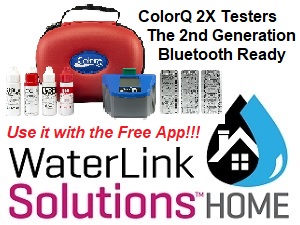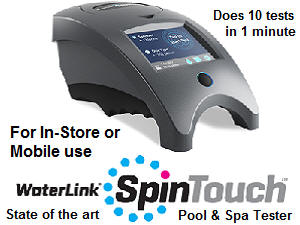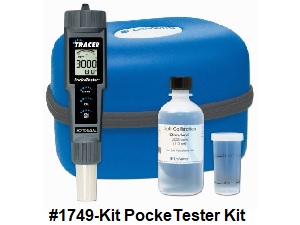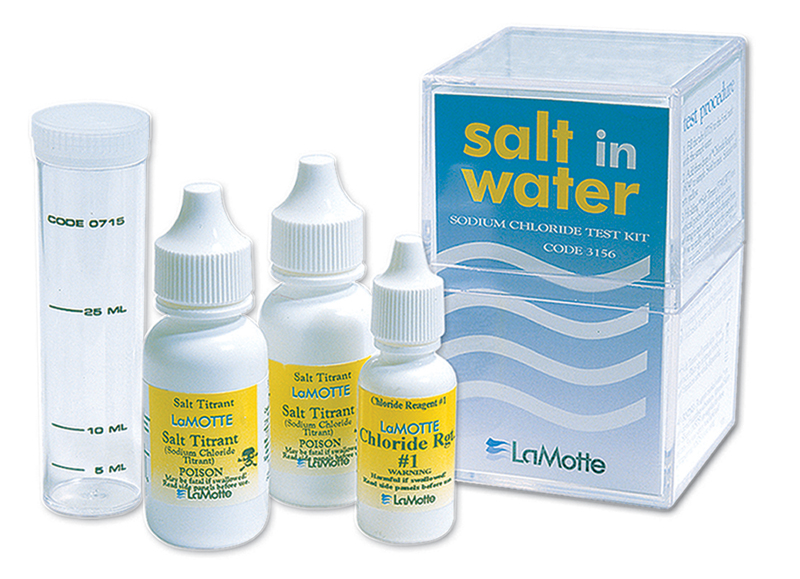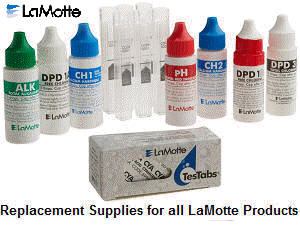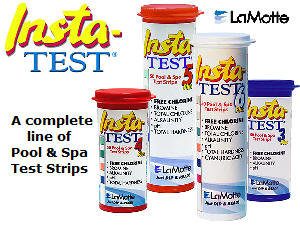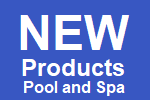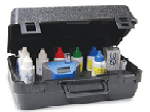| |
|
Scroll
down to browse through some pool and spa information,
relative to Calculating Chemical Additions. Please
click the Pool Problems Link, on top of every page, to
access a complete listing of Pool Problem subjects, an
alphabetized Website Table of Contents, Pool Equipment
Information, About Alan Biographic Material and a Pool
Glossary. Use the other links to access additional
subject information. More information about some new and
unique products, for pools and spas, can be found by
visiting
The Website
Store. You'll never know what you'll find and
that's always fun. Be better prepared and avoid
costly problems!
|
|
 |
Shipping is FREE* . . . within
the Continental U.S.
A $9.99
handling charge will apply
to Continental U.S. Orders,
under $75.00. Orders
outside of the Continental
U.S. may require some
additional charge, based on
quantity and destination.
Most products can be
shipped World-Wide. International
and orders outside of
Continental U.S. - see
comments on the ordering
pages. |
|
 |

Major
Credit Cards and PayPal are accepted. |
|
On-line
shopping since 2002 - Safe and Secure!!! |
|
Testing Pool and Spa Water Chemistry!!! |
|
Testing
water is an integral part of pool and
spa water management. Reliable and
accurate results are important, in order
to maintain proper water chemistry.
A
ColorQ, all digital Water Tester
can perform all of the common tests,
while eliminating the color-matching and
guesswork. With 10 models,
performing up to 11 different test
factors, one is right for every need.
The
WaterLink SpinTouch Labs are the
ultimate tester, doing up to 10
different water test factors, in just 1
minute.
A
PockeTester Kit is a convenient
way to monitor the salt level. |
|
|
If you have a pool or spa water
testing need, we should have the
product.
►
Scroll down to read through some
chemical additions
information.
◄
|
|
Calculating Pool or Spa Chemical
Additions |
Water chemistry is where the path
to proper water quality, clarity and sanitation
starts. Water testing provides the basis for
determining which chemicals are required to
correct and optimize chemical concentrations.
The proper maintenance of the pool water is an
ongoing responsibility and not something to be
taken for granted. Having the right water
testing equipment will make the task easier,
save money on chemicals and help avoid problems.
Become better informed and take charge of your
own water quality! Proper chemical and
maintenance practices will help reduce chemical
expenses and even help reduce the energy costs.
Savings that will enable you for better enjoy
your pool. If problems arise, refer to the
Pool Problems
Page or Spa
Problems Page, as a source of
problem-solving information, broken down into
various categories. Scroll down the page
and click on the linked
keywords or
catch phrases
below, to access additional information, on that topic or product.
Do you know what's in
your water? If you're having problems, with water
clarity or quality, testing allows you to better understand
the chemistry and determine the cause of the problem.
Once understood, you can select the best treatment option.
Understanding the nature of the problem, should be step
one. For information about our full selection of
testing options, visit our
Test Equipment Store.
 |
Join our E-Letter Mailing List.
You'll receive 1-3 E-Letters a
month, featuring helpful pool
and spa advice, new product
information and sale
announcements. All we
require is your e-mail address
and you can opt out anytime you
wish.
Your information
will never be shared or sold. |
Unsure about your
pool or spa capacity (gallons or liters)?
Calculating Pool or Spa Volume
Need conversion
to metric units?
Metric
Conversion Information
Need a Water
Analyzer to suit your particular needs?
Pool and
Spa Water Testers |
|
Suggested Residential Pool or Spa Chemistry Ranges
(Scroll down the page for help with dosages.) |
|
Test |
Ideal
Range |
Acceptable
Range |
Problem
Range |
Corrective
Action |
|
pH (Chlorine) |
7.2 - 7.6 |
7.2 - 7.6 |
too high or too
low |
Add acid or sodium
bisulfate to lower.
Add soda ash to raise. |
|
pH (Bromine) |
7.2 - 7.8 |
7.2 - 7.8 |
too high or too
low |
Add acid or sodium
bisulfate to lower.
Add soda ash to raise. |
Free Chlorine, PPM
(Active Germicidal Form) |
1.5 - 3 PPM |
1.5 - 3 PPM |
over 5.0 PPM |
Too low add
chlorine.
Too high cut back on chlorine additions. |
Combined Chlorine,
PPM
(Total minus Free Chlorine) |
0 - 0.3 PPM |
0 - 1.0 PPM |
over 1.0 PPM |
Too high
superchlorinate. |
Total Chlorine,
PPM
(Free plus Combined Chlorine) |
1.5 - 3 PPM |
1 - 3 PPM |
over 3.0 PPM |
Too high cut back
on chlorine additions. |
|
Superchlorination |
10 PPM |
10 PPM |
n/a |
How much will be
required depends on product used and pool
condition. |
|
Bromine, PPM |
3 - 5 PPM |
3 - 5 PPM |
over 10 PPM |
Too low add
bromine or shock
Too high cut back on bromine additions. |
|
Total Alkalinity,
PPM |
80 - 120 PPM |
80 - 180 PPM |
over 180 PPM |
Too low add sodium
bicarbonate.
Too high consider adding acid. |
|
Calcium Hardness,
PPM, (Vinyl) |
80 - 120 PPM |
80 - 400 PPM |
over 400 PPM |
Too low add
Calcium chloride.
Too high add sequestering agent. |
|
Calcium Hardness,
PPM, (Gunite) |
150-200 PPM |
150-400 PPM |
over 400 PPM |
Too low add
Calcium chloride.
Too high add sequestering agent. |
|
Cyanuric Acid,
PPM |
20 - 40 PPM
|
20 - 50 PPM |
over 50 PPM |
Too low add
Cyanuric Acid.
Too high replace some water. |
|
Iron, PPM |
0.0 PPM |
0.0 PPM |
any measurable
amount |
Add metal
treatment. At least one dose per 0.5 PPM. |
Copper, PPM
(Mineral Sanitizer or Ionizer) |
0.1 - 0.3 PPM |
0.1 - 0.3 PPM
(with pH favoring 7.2) |
over 0.3 PPM |
Follow
manufacturer's instructions. |
|
Copper, (unplanned
additions, natural sources or corrosion) |
0.0 PPM |
0.1 - 0.3 PPM
(with pH favoring 7.2) |
over 0.3 PPM |
Add metal
treatment. At least one dose per 0.5 PPM. |
|
Manganese, PPM |
0.0 PPM |
0.0 PPM |
any measurable
amount |
Add metal
treatment. At least one dose per 0.5 PPM |
|
Nitrates, PPM |
0 - 10.0 PPM |
0 - 40 PPM |
over 40 PPM |
No practical
solution. Removing phosphates mitigates their
presence. |
|
Phosphates, PPB |
0 - 100 PPB |
0 - 250 PPB |
over 250 PPB |
Phosphate removers
are available. If untreated, higher chlorine
usage results. |
Total Dissolved
Solids, PPM
no salt chlorine generator |
300 - 2000 PPM |
300 - 3000 PPM |
over 3000 PPM |
Replace some of
the water. |
Total Dissolved
Solids, PPM
with salt chlorine generator |
3000-4000 PPM |
3000-5000 PPM |
over 5000 PPM |
Test salt level
and consider replacing some water, if necessary. |
Salt, PPM
with salt chlorine generator |
Manufacturer's
Recommendation |
Manufacturer's
Recommendation |
Too high or too
low. |
Add salt, if too
low.
Replace some water, if too high. |
|
Biguanide, PPM |
30 - 50 PPM |
30 - 50 PPM |
Too high or too
low. |
Add Biguanide, if
too low.
Too high, reduce additions. |
|
Biguanide Shock,
PPM |
Suggested
application is 1-quart per 7500 gallons. Enough
has to be added to register a 5-10 PPM level and
produce clear water.
Varies with spa
use. |
Too high or too
low. |
Add Biguanide
Shock, if too low.
Too high, reduce additions. |
|
* Cyanuric
Acid levels over 50 PPM are not likely to
provide any additional benefit or protection and
will reduce the effectiveness of chlorine, as
the levels rise above 50 PPM. Coverted
spas do not require this chemical.
** Cyanuric Acid levels over 50 PPM require
increasingly higher amounts of free chlorine, to
provide the same degree of sanitation, as when
the CYA levels are closer to 50 PPM. For
best results lower the level to under 50 PPM.
The use of stabilized chlorine will cause the
cyanuric acid level to rise, as product is
added. To avoid this issue, stop all use
of stabilized chlorine and switch to a
salt
chlorine generator or alternative form of
chlorine. |
| |
|
▲pH |
Raising pH with Soda Ash (Sodium Carbonate)
● ounces or pounds ● |
|
Raising or
lowering the pH will, will usually, move the
Total Alkalinity in the same direction. It
is not always practical to get both
parameters within range. pH is always more
important! If the pH is in range and the TA
is higher, it may not present problems, so
long as the water is clear and there are no
signs of scaling. The higher the TA, the
more stable the pH becomes, and the more
chemicals will be required to move it, in
any direction. A high TA and an acceptable
pH is not a problem, so long as the water is
clear and there are no signs of scale
formation. The lower the TA, the less stable
the pH becomes, and the easier it moves up
or down. Having the right tester will make
your test results more reliable and make
maintaining the water chemistry easier and
less expensive. These amounts are just
guides. Your pool or spas could require
more. or less, based on the overall
sanitizing method. Remember, you can add
more - you can't take out. |
|
pH |
500
Gallons |
1000
Gallons |
5000
Gallons |
10,000
Gallons |
15,000
Gallons |
20,000
Gallons |
25,000
Gallons |
|
Under 6.6 |
0.7 oz |
1.5 oz |
8.0 oz |
1.0 lbs |
1.5 lbs |
2.0 lbs |
2.5 lbs |
|
6.6 - 7.0 |
0.6 oz |
1.25 oz |
6.0 oz |
12 oz |
1.0 lbs |
1.5 lbs |
1.75 lbs |
|
7.0 - 7.2 |
0.3 oz |
0.75 oz |
4.0 oz |
8 oz. |
12.0 oz |
1.0 lbs |
1.25 lbs |
|
The above
dosages are just a guide and your pool could
require more or less. Pools with higher
total alkalinities and TDS could require
more. Add slowly in increments, in front of
a moving return flow. Remember you can
always add more - you can't take out! Go to
the
Chemical Safety Practices page, for more
about proper procedures and handling. Larger
or smaller pools or spas, use proportionate
amounts. |
| |
|
▼pH |
Lowering pH with Muriatic Acid or Sodium
Bisulfate
● ounces, pounds (lbs) or
pints ● |
|
pH |
500
Gallons |
1000
Gallons |
5000
Gallons |
10,000
Gallons |
15,000
Gallons |
20,000
Gallons |
25,000
Gallons |
|
Over 8.4 |
1.5 oz |
3.0 oz |
1.0 lbs or
pints |
2.0 lbs or
pints |
2.5 lbs or
pints |
4.0 lbs or
pints |
5.0 lbs or
pints |
|
8.0 - 8.4 |
1.25 oz |
2.5 oz |
12.0 oz |
1.5 lbs or
pints |
2.0 lbs or
pints |
3.0 lbs or
pints |
4.0 lbs or
pints |
|
7.8 - 8.0 |
0.75 oz |
1.5 oz |
8.0 oz |
1.0 lbs or
pints |
1.5 lbs or
pints |
2.0 lbs or
pints |
3.0 lbs or
pints |
|
7.6 - 7.8 |
0.5 oz |
1.0 oz |
5.0 oz. |
10.0 oz |
12.0 oz |
1.0 lbs or
pints |
2.0 lbs or
pints |
|
The above
dosages are just a guide and your pool could
require more or less. Pools with higher
total alkalinities and TDS could require
more. Add slowly in increments, in front of
a moving return flow. Always add the acid to
the pool water. Go to the
Chemical Safety Practices page, for more
about proper procedures and handling.
Larger or smaller pools or spas, use
proportionate amounts. |
| |
|
▲TA |
Raising Total Alkalinity with Baking Soda
(Sodium Bicarbonate)
● ounces or pounds (lbs) ●
|
|
Raising or
lowering the Total Alkalinity will move the
pH in the same direction. It is not always
practical to get both parameters within
range. pH is always more important! Low TA
makes the pH less stable. High TA makes the
pH more stable, but can lead to scaling
issues, if the calcium hardness is over 400
PPM. If the calcium hardness is too high, a
TA closer to 80 PPM should be of benefit. If
the TA is high and the pH is within range
and the water is clear, without any signs of
scaling, there is no compelling reason to
have to lower the TA. Attempting to do so,
may prove futile. To get a truer TA reading,
you should subtract 30% of the Cyanuric Acid
test reading, from the TA reading. Having
the right tester will make your test results
more reliable and make maintaining the water
chemistry easier and less expensive. These
amounts are just guides. Your pool or spas
could require more. or less, based on the
overall sanitizing method Remember, you can
add more - you can't take out. |
Amount of
Increase |
500
Gallons |
1000
Gallons |
5000
Gallons |
10,000
Gallons |
15,000
Gallons |
20,000
Gallons |
25,000
Gallons |
|
10 PPM |
1 ounces |
2 ounces |
11 ounces |
1.4 pounds |
2.1 pounds |
2.8 pounds |
3.5 pounds |
|
20 PPM |
2 ounces |
4 ounces |
1.4 pounds |
2.8 pounds |
4.2 pounds |
5.6 pounds |
7.0 pounds |
|
30 PPM |
3.5 ounces |
7 ounces |
2.2 pounds |
4.2 pounds |
6.3 pounds |
8.4 pounds |
10.5 pounds |
|
40 PPM |
4.5 ounces |
9 ounces |
2.8 pounds |
5.6 pounds |
8.4 pounds |
11 pounds |
14 pounds |
|
50 PPM |
5.5 ounces |
11 ounces |
3.5 pounds |
7 pounds |
10 pounds |
14 pounds |
17 pounds |
|
The above
dosages are just a guide and your pool could
require more or less. Pools with higher
total alkalinities and TDS could require
more. Add slowly in increments, in front of
a moving return flow. Always add the acid to
the pool water. Go to the
Chemical Safety Practices page, for more
about proper procedures and handling.
Larger or smaller pools or spas, use
proportionate amounts. |
| |
|
▼TA |
Lowering Total Alkalinity Using Muriatic
Acid or
Sodium Bisulfate
● ounces, pounds (lbs) or
pints ● |
|
Amount of Decrease |
500
Gallons |
1000
Gallons |
5000
Gallons |
10,000
Gallons |
15,000
Gallons |
20,000
Gallons |
25,000
Gallons |
|
10 PPM |
1.2 ounces |
2.5 ounces |
1.0 lbs or
pints |
2.0 lbs or
pints |
3.0 lbs or
pints |
4.0 lbs or
pints |
5.0 lbs or
pints |
|
20 PPM |
2.5 ounces |
5.0 ounces |
2.0 lbs or
pints |
4.0 lbs or
pints |
6.0 lbs or
pints |
8.0 lbs or
pints |
10.0 lbs or
pints |
|
30 PPM |
3.7 ounces |
7.5 ounces |
3.0 lbs or
pints |
6.0 lbs or
pints |
9.0 lbs or
pints |
12.0 lbs or
pints |
15.0 lbs or
pints |
|
40 PPM |
5.0 ounces |
10.0 ounces |
4.0 lbs or
pints |
8.0 lbs or
pints |
12.0 lbs or
pints |
16.0 lbs or
pints |
20.0 lbs or
pints |
|
50 PPM |
6.2 ounces |
12.5 ounces |
5.0 lbs or
pints |
10.0 lbs or
pints |
15.0 lbs or
pints |
20.0 lbs or
pints |
25.0 lbs or
pints |
|
The above
dosages are just a guide and your pool could
require more or less. Add slowly in
increments, in front of a moving return
flow. To obtain a truer TA reading, subtract
30% of the Cyanuric Acid reading from the TA
reading. Remember you can always add more -
you can't take out! Go to the
Chemical Safety Practices page, for more
about proper procedures and handling.
Larger or smaller pools or spas, use
proportionate amounts. Your pool or spa
could require more. or less, based on the
overall sanitizing method. |
| |
|
▲CH |
Raising Calcium Hardness with Calcium
Chloride
● ounces or pounds ●
|
|
Having the
right tester will make your test results
more reliable and make maintaining the water
chemistry easier and less expensive. High
levels of calcium hardness can lead to
cloudy water, scaling, heater and filter
issues. Low calcium hardness, in gunite
pools can lead to etching of the surface and
problems with the appearance of the finish.
Calcium may be present in source water to
varying extents. The use of calcium
hypochlorite, as a chlorine source or shock
treatment, will increase the hardness of the
pool water, over time. These amounts are
just guides. Your pool could require more or
less, depending on the accuracy of the test.
Remember, you can add more - you can't take
out. |
|
Amount of Increase |
500
Gallons |
1000
Gallons |
5000
Gallons |
10,000
Gallons |
15,000
Gallons |
20,000
Gallons |
25,000
Gallons |
|
10 PPM |
1.0 ounces |
2.0 ounces |
10 ounces
|
1.2 pounds |
1.7 pounds |
2.5 pounds |
3.2 pounds |
|
20 PPM |
2.0 ounces |
4.0 ounces |
1.2 pounds |
2.5 pounds |
3.75pounds |
5.0 pounds |
6.2 pounds |
|
30 PPM |
3.0 ounces |
6.0 ounces |
1.7 pounds |
3.7 pounds |
5.5 pounds |
7.5 pounds |
9.2 pounds |
|
40 PPM |
4.0 ounces |
8.0 ounces |
2.5 pounds |
5.0 pounds |
7.5 pounds |
10 pounds |
12 pounds |
|
50 PPM |
5.0 ounces |
10 ounces |
3.0 pounds |
6.2 pounds |
9.2 pounds |
12 pounds |
15 pounds |
|
60 PPM |
6.0 ounces |
12 ounces |
3.5 pounds |
7.5 pounds |
11 pounds |
15 pounds |
18 pounds |
|
70 PPM |
7 ounces |
14 ounces |
4.2 pounds |
8.7 pounds |
13 pounds |
17 pounds |
21 pounds |
|
80 PPM |
0.5 pound |
1 pound |
5 pounds |
10 pounds |
15 pounds |
20 pounds |
25 pounds |
|
The above
dosages are just a guide and your pool could
require more or less. Add slowly in
increments, in front of a moving return flow
or by broadcasting across the surface. Vinyl
and Fiberglass pools can do well with lower
levels, as their walls are not made of
masonry materials. Gunite pools should
maintain a higher level, to help protect the
walls and minimize the tendency of the pH to
rise, as calcium dissolves from the
plastered surface. High pH and/or TA make
cloudy water more likely, as this chemical
is added. Larger or smaller pools, use
proportionate amounts. Lowering Calcium
Hardness can be done, by replacing some of
the water with softer water. Adding 1 pound
of Tri Sodium Phosphate (TSP), per 10,000
gallons of pool water, will drop the calcium
harness by 11 PPM. However, this will cause
cloudiness, a major amount of cleaning of
the pool and filter and the possibility that
any lingering phosphates will promote algae
growth. Calcium sequestering agent are
another choice for dealing with high calcium
levels. Go to the
Chemical Safety Practices page, for more
about proper procedures and handling.
Larger or smaller pools or spas, use
proportionate amounts. Your pool or spa
could require more. or less, based on the
overall sanitizing method. |
| |
|
▲CYA |
Raising Chlorine
Stabilizer with Cyanuric Acid (CYA)
● ounces or pounds ● |
|
Having the
right tester will make your test results
more reliable and make maintaining the water
chemistry easier and less expensive.
Cyanuric acid is only used in
chlorine-maintained outdoor pool and helps
to make the chlorine lake longer, by
protecting it from the Sun's UV rays. In
northern areas a range of 20-40 PPM is
recommended. At higher levels, cyanuric acid makes the
chlorine less effective and forces to pool
owner to maintain a higher free chlorine
level. The only way to lower a high level is
to replace some of the water, preferably in
increments, to avoid damage to the pool.
These amounts are just guides. Your pool or
spa could require more or less, depending on
the accuracy of the test. Remember, you can
add more - you can't take out. THIS CHEMICAL
IS NOT REQUIRED IN SPAS THAT ARE COVERED,
MOST OF THE TIME. |
|
Amount of Increase |
500
Gallons |
1000
Gallons |
5000
Gallons |
10,000
Gallons |
15,000
Gallons |
20,000
Gallons |
25,000
Gallons |
|
10 PPM |
0.6 ounces |
1.25 ounces |
6.25 ounces
|
12.5 ounces |
1.25 pounds |
1.5 pounds |
2.0 pounds |
20 PPM
|
1.2 ounces |
2.5 ounces |
12.5 ounces |
1.5 pounds |
2.25 pounds |
3.0 pounds |
3.75 pounds |
|
30 PPM |
1.8 ounces |
3.75 ounces |
1.25 pounds |
2.5 pounds |
3.75 pounds |
5.0 pounds |
6.25 pounds |
|
40 PPM |
2.5 ounces |
5.0 ounces |
1.65 pounds |
3.25 pounds |
5.0 pounds |
6.5 pounds |
8.25 pounds |
|
50 PPM |
3.1 ounces |
6.25 ounces |
2.0 pounds |
4.0 pounds |
6.0 pounds |
8.0 pounds |
10.0 pounds |
|
The above
dosages are just a guide and your pool
should require these amounts, providing the
testing was reasonably accurate. Add slowly
in increments, in front of a moving return
flow or by broadcasting across the surface.
Adding it very slowly, to the skimmer, is
another way to add this slowly dissolving
chemical. Pools that use Trichlor or Dichlor
will find that their cyanuric acid levels
will rise over time. If trichlor is used as
the primary sanitizer, dichlor as a shock
should be avoided, as it will only speed up
the rise of the cyanuric acid level. Water
replacement is the only means of lowering a
high level. Go to the
Chemical Safety Practices page, for more
about proper procedures and
handling. Larger or smaller pools or spas,
use proportionate amounts. To avoid a
rising cyanuric acid issue, stop all use
of stabilized chlorine and switch to a
salt
chlorine generator or alternative form of
chlorine. THIS CHEMICAL IS
NOT REQUIRED IN SPAS THAT ARE COVERED, MOST
OF THE TIME. |
| |
|
▲SC |
Super Chlorination
Dosages to Boost by 10 PPM
● ounces, pounds (lbs) or gallons ● |
|
Having the
right tester will make your test results
more reliable and make maintaining the water
chemistry easier and less expensive. Which
product to use is a matter of what is best
for your water chemistry, as well as
cost-effectiveness and convenience factors.
Liquid chlorine is cost effective and adds
no problematic byproducts, but is not
necessarily convenient. Calcium hypochlorite
is cost effective, but can add unwanted
calcium hardness. Dichlor is convenient and
easy to use, but tends to raise the cyanuric
acid level. Lithium Hypochlorite is
convenient, but less cost effective. These
amounts are just guides. Your pool or spa
could require more or less, depending on the
state of the water quality. Remember, you
can add more - you can't take out. |
|
Product |
500
Gallons |
1000
Gallons |
5000
Gallons |
10,000
Gallons |
15,000
Gallons |
20,000
Gallons |
25,000
Gallons |
Liquid
Chlorine
10-15% |
12
ounces |
25
ounces |
1 gallon |
2
gallons |
3
gallons |
4
gallons |
5
gallons |
|
Calcium
Hypochlorite |
1.2 ounces |
2.5 ounces |
12 ounces |
1.5 pounds |
2.25 pounds |
3.0 pounds |
3.7 pounds |
|
Dichlor |
1.8 ounces |
3.7 ounces |
1.2 pounds |
2.5 pounds |
3.75 pounds |
5.0 pounds |
6 pounds |
|
Lithium
Hypochlorite |
2.5 ounces |
5.0 ounces |
1.6 pounds |
3.2 pounds |
5.0 pounds |
6.5 pounds |
8.2 pounds |
|
Superchlorination is used to help destroy
algae, restore water quality and to
eliminate the odorous and irritating forms
of chlorine. Boosting the free chlorine to
10 PPM, will destroy 1.0 PPM of combined
chlorine. Combined chlorine is the
difference between the Total Chlorine
reading and the Free Chlorine reading. Test
values under 0.3 PPM are indicative of good
chlorine management. Reading between 0.3 and
1.0 PPM, indicate that more attention may
need to be directed to the chlorine
application rate. Readings over 1.0 PPM are
likely to result in eye irritation and
odorous conditions. Go to the
Chemical Safety Practices page, for more
about proper procedures and handling.
Larger or smaller pools, use proportionate
amounts. Your pool or spa could require
more. or less, based on the overall
sanitizing method. |
| |
|
Salt/TDS |
Total Dissolved Solids (TDS), PPM
Salt, PPM |
|
Having the right
Salt and TDS
Tester will make your test
results more reliable and make
maintaining the water chemistry
easier and less expensive. High
TDS could lead to water quality
issues and might be treated
simply by replacing some of the
water. With a salt chlorine
generator, it is important to
monitor the salt level, to get
optimum performance and help
extend the life of the salt
cell. Too low a salt level could
make it difficult to maintain a
proper free chlorine level and
could shorten the life of the
salt cell. Too much salt will
shorten the life of the salt
cell, make pH control more
challenging and add to the
possibility of corrosion and
clarity issues. These amounts
are just guides. Your pool or
spa could require more or less,
depending on the accuracy of the
test. Remember, you can add more
- you can't take out. |
|
Total
Dissolved Solids (TDS) has to be separated
into two categories. TDS that results from
naturally occurring mineral salts, build up
of chemical residues and waste from bathers.
What is present in the source water may not
be controllable and pool or spa usage will
add to the TDS level. As this level rises to
2000-3000 PPM, the possibility exists that
it will affect water clarity, scaling and
sanitizer performance. Depending on the
nature of the available replacement water,
it may be difficult to drastically lower the
level. High TDS that results, from the
addition of the required amount of salt when
a salt chlorine generator is used, presents
a different problem. 2500-4000 PPM of salt
may have to be added, depending on the
manufacturer's recommendation, and does not
present the same issues, unless the water
was high in TDS before the salt was added.
If that is the case, clarity, scaling and
corrosion issues could present themselves.
Addition of sequestering agents could help
minimize problems and help keep the salt
cell free of scale. Go to the
Chemical Safety Practices page, for more
about proper procedures and handling.
|
|
Visit The Website Stores . . . for
better informed shopping!!! |
|
 |
Shipping is FREE* . . . within
the Continental U.S.
A $9.99
handling charge will apply
to Continental U.S. Orders,
under $75.00. Orders
outside of the Continental
U.S. may require some
additional charge, based on
quantity and destination.
Most products can be
shipped World-Wide. International
and orders outside of
Continental U.S. - see
comments on the ordering
pages. |
|
 |

Major
Credit Cards and PayPal are accepted. |
|
▲
Return To Top Of Page
▲
Aqualab Systems, LLC does not
make any warranty or
representation, either expressed
or implied, regarding the
accuracy or completeness of the
information provided by this
website; nor does Aqualab
Systems., LLC. assume any
liability of any kind whatsoever
related to, or resulting from,
any use or reliance on this
information. The content of this
website should not be used, if
it is conflict with any
applicable federal, state or
local regulations or guidelines.
© Aqualab Systems, LLC. All
rights reserved
|
|









